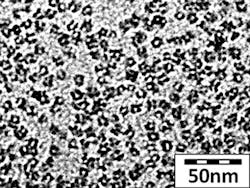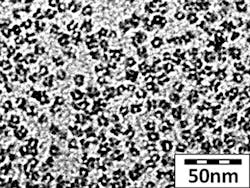‘Cornell dots’ get single pore makeover for more targeted drug delivery
Cornell University (Ithaca, NY) researchers have created a pore in "Cornell dots," which are brightly glowing nanoparticles the researchers developed that can carry medicine. Dubbed C-Dots, they may help light up cancer cells and provide a new patient-friendly, viable option to battle cancer.
Related: FDA approves human quantum-dot trial
âNo one has ever made a one-pore, super-small silica particleâat 10 nm and belowâto deliver medicine,â says Ulrich Wiesner, Cornellâs Spencer T. Olin Professor of Materials Science and Engineering. âClearing this object out of the body quickly also minimizes its impact on the body.â
Previously, Wiesner and his colleagues had demonstrated the useful, diagnostic aspects of C-Dots. Now, they have illustrated the porous C-Dots (mC-Dots, for mesoporous) concept: The mC-Dots could find the tumor, deliver medicine to kill it, and then escape in urine within a couple of hours.
A single C-Dot consists of dye molecules encased in a chemically inert silica shell that can be as small as 5 nm in diameter. Previous research showed that the outside of the shell can be coated with organic molecules that will attach to such desired targets as tumor surfaces or even locations within tumors.
The cluster of dye molecules in a single dot in solution fluoresces near-infrared (NIR) light much more brightly than single dye molecules, and the fluorescence will identify malignant cells, showing a surgeon exactly what needs to be cut out and helping ensure that all malignant cells are found. But surgeons may one day forego the scalpel because with a built-in pore, the mC-Dots have the ability to bring medicine to the tumor.
Wiesner presented a talk on their work, titled âCornell Dots: Fluorescent Core-shell Silica Nanoparticles to Interrogate Biological Environments,â at the American Chemical Society meeting in New Orleans, LA, on April 7.
-----
Follow us on Twitter, 'like' us on Facebook, and join our group on LinkedIn
Subscribe now to BioOptics World magazine; it's free!

